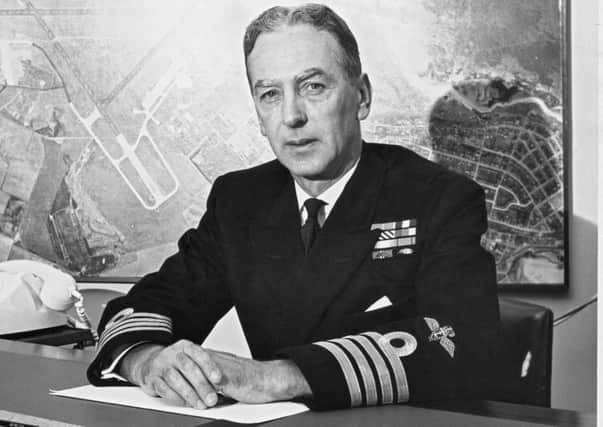Eric '˜Winkle' Brown's death prompts calls for memorial
This article contains affiliate links. We may earn a small commission on items purchased through this article, but that does not affect our editorial judgement.


Captain Eric “Winkle” Brown, who was born and raised in Leith, became the most decorated pilot of the Royal Navy for his derring-do.
And his death at the weekend, aged 97, has sparked a new appeal for his aviation exploits and bravery to be officially recognised in his home city.
Advertisement
Hide AdAdvertisement
Hide AdDOWNLOAD THE EDINBURGH EVENING NEWS APP ON ITUNES OR GOOGLE PLAY
Calls for a memorial to the pilot, who was hailed a hero and an inspiration by astronaut Tim Peake, have been backed by Scottish Labour leader Kezia Dugdale and it is understood that the city council would be sympathetic to the idea.
Lothians MSP Ms Dugdale, who is planning to place a motion before the Scottish Parliament to pay tribute to the legendary pilot, said: “Before his sad death I backed calls for Captain Brown to be awarded a knighthood in recognition of his service to our country, and I now fully support a memorial. We should never forget his sacrifice and bravery and a memorial would be one way of making sure future generations can learn about his incredible life.”
Leith councillor Gordon Munro added: “He is a legend and a Leither. At a minimum we should name a new street in Leith after him, however, a ‘spirit of adventure’ award may be more appropriate.”
Advertisement
Hide AdAdvertisement
Hide AdCapt Brown was born in Leith in 1919, the son of a Royal Air Corps pilot, and he was just eight when he first took to the skies, sitting on his father’s knee.
The Royal High pupil fell in love with flying and when he studied languages at Edinburgh University he joined its air squadron.
After the outbreak of the Second World War he joined the Royal Navy as a Fleet Air Arm pilot, earning his nickname Winkle because of his short stature. He shot down his first enemy planes while on the HMS Audacity – and was one of the few survivors when it was torpedoed.
His skills saw him become a test pilot and he went on to fly 487 different types of aircraft – more than any other pilot ever.
Advertisement
Hide AdAdvertisement
Hide AdHe piloted 2407 aircraft carrier landings – including the very first one – and survived 11 plane crashes.
He was witness to the liberation of the Bergen Belsen concentration camp and took part in interrogations of leading Nazis after the war.
And after the war he regularly risked his life, pushing the boundaries of jet aviation.
Lord Provost Donald Wilson said: “Leith-born Eric ‘Winkle’ Brown led a remarkable life. I’m sure I speak on behalf of everyone in the city when I say I’m proud of his Edinburgh roots.
Advertisement
Hide AdAdvertisement
Hide Ad“He was honoured at 10 Downing Street as a Great Scot and he is sure to go down in the history books as one of the most decorated and significant pilots to fly the skies. His aeronautical feats were truly incredible.”
But while council sources said it would be very willing to consider proposals for a statue or plaque “in the light of Captain Brown’s achievements”, the authority could not commission such a work itself.